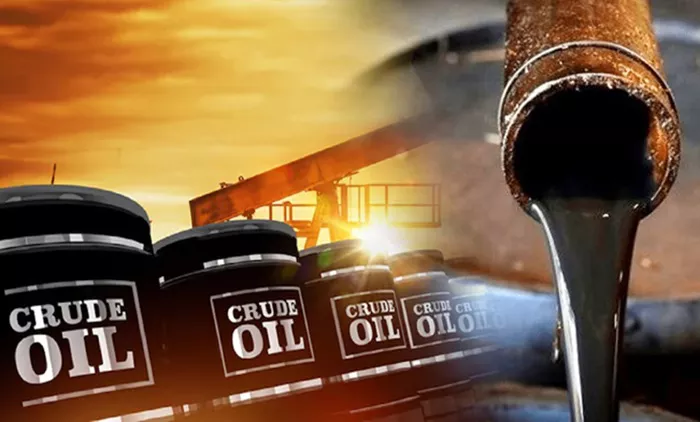The transportation of crude oil is a critical component of the global energy supply chain, ensuring that this valuable resource reaches refineries and consumers around the world. However, this process carries a multitude of risks that can impact the environment, economy, public safety, and social structures. It is essential to recognize and address these risks to minimize their potential negative effects and ensure the safe and efficient movement of crude oil. Below, we explore the various risks associated with crude oil transportation and the measures needed to mitigate them.
1. Environmental Risks
Oil Spills and Leaks
One of the most significant risks associated with crude oil transportation is the potential for oil spills. Spills can occur during various stages, including extraction, transportation, and storage. These spills can have devastating effects on marine and terrestrial ecosystems, leading to long-term environmental damage. For instance, oil spills can harm wildlife, contaminate water sources, and disrupt ecosystems. The 2010 Deepwater Horizon spill in the Gulf of Mexico exemplifies the severe environmental impact of oil spills, affecting marine life and coastal habitats extensively.
Soil and Water Contamination
In addition to spills, leaks from pipelines or storage tanks can lead to soil and water contamination. Crude oil can seep into the ground, affecting soil quality and groundwater supplies. This contamination can have adverse effects on agriculture, drinking water, and local wildlife. Cleaning up contaminated sites can be costly and time-consuming, requiring extensive remediation efforts to restore affected areas.
Air Pollution
The transportation of crude oil, particularly by land and sea, can contribute to air pollution. Emissions from oil tankers, trucks, and trains can release pollutants such as sulfur dioxide, nitrogen oxides, and volatile organic compounds into the atmosphere. These pollutants can contribute to smog formation and have detrimental effects on air quality and public health.
See also: What Are The Reasons For The Decrease In U.S. Crude Oil Production Since 1970?
2. Economic Risks
Damage to Infrastructure
Accidents or spills during the transportation of crude oil can cause significant damage to infrastructure, including pipelines, railways, and port facilities. Repairing or replacing damaged infrastructure involves substantial costs and can disrupt the transportation network. This disruption can affect the supply chain and lead to increased transportation costs, impacting the overall economy.
Financial Liabilities
The financial liabilities associated with oil spills and accidents can be substantial. Companies involved in the transportation of crude oil may face significant legal and cleanup costs, as well as potential fines and penalties. The financial burden of these liabilities can affect the profitability of the companies involved and may lead to increased costs for consumers.
Market Volatility
Crude oil transportation disruptions can lead to market volatility, affecting global oil prices. For instance, supply chain disruptions caused by accidents, geopolitical events, or natural disasters can lead to fluctuations in oil prices. This volatility can impact the global economy, influencing energy costs and economic stability.
3. Safety Risks
Accidents and Explosions
Transportation methods such as pipelines, tankers, and trains carry inherent risks of accidents and explosions. Pipeline failures, tanker collisions, and train derailments can result in catastrophic events, posing risks to human safety and property. These accidents can lead to injuries, fatalities, and significant damage to surrounding areas.
Health Risks
Exposure to crude oil and its byproducts can pose health risks to individuals involved in transportation activities. Workers in the oil transportation industry may be exposed to hazardous substances, including benzene and other toxic chemicals. Prolonged exposure can lead to health issues such as respiratory problems, skin conditions, and long-term chronic illnesses.
Security Threats
Crude oil transportation infrastructure can be vulnerable to security threats, including terrorism and sabotage. Attacks on pipelines, tankers, or storage facilities can lead to significant environmental and economic damage. Ensuring the security of transportation infrastructure is crucial to mitigating these risks and protecting public safety.
See also: Who Is The Biggest Producer Of Crude Oil 2024?
4. Social Risks
Impact on Communities
Oil spills and accidents can have profound effects on local communities. Environmental damage can disrupt local economies, particularly those reliant on fishing, tourism, and agriculture. Communities affected by spills may face long-term health and environmental challenges, leading to social and economic hardship.
Displacement of Populations
In some cases, severe environmental damage or accidents may necessitate the temporary or permanent displacement of communities. Residents may need to relocate due to contamination or safety concerns, leading to social disruptions and challenges in finding alternative living arrangements.
5. Regulatory and Compliance Risks
Regulatory Compliance
The transportation of crude oil is subject to stringent regulations aimed at minimizing risks and ensuring safety. Non-compliance with these regulations can result in legal penalties, fines, and increased scrutiny from regulatory agencies. Companies must adhere to environmental and safety standards to avoid legal and financial repercussions.
Evolving Regulations
Regulations governing crude oil transportation are continually evolving in response to new risks and technological advancements. Staying compliant with changing regulations can be challenging for companies, requiring ongoing adaptation and investment in safety measures and infrastructure improvements.
Conclusion
The transportation of crude oil presents a range of risks, including environmental, economic, safety, social, and regulatory challenges. Addressing these risks requires comprehensive risk management strategies, including robust safety measures, environmental protection protocols, and effective regulatory compliance. By understanding and mitigating these risks, stakeholders can work towards safer and more sustainable practices in the transportation of crude oil.
Related Topics:

